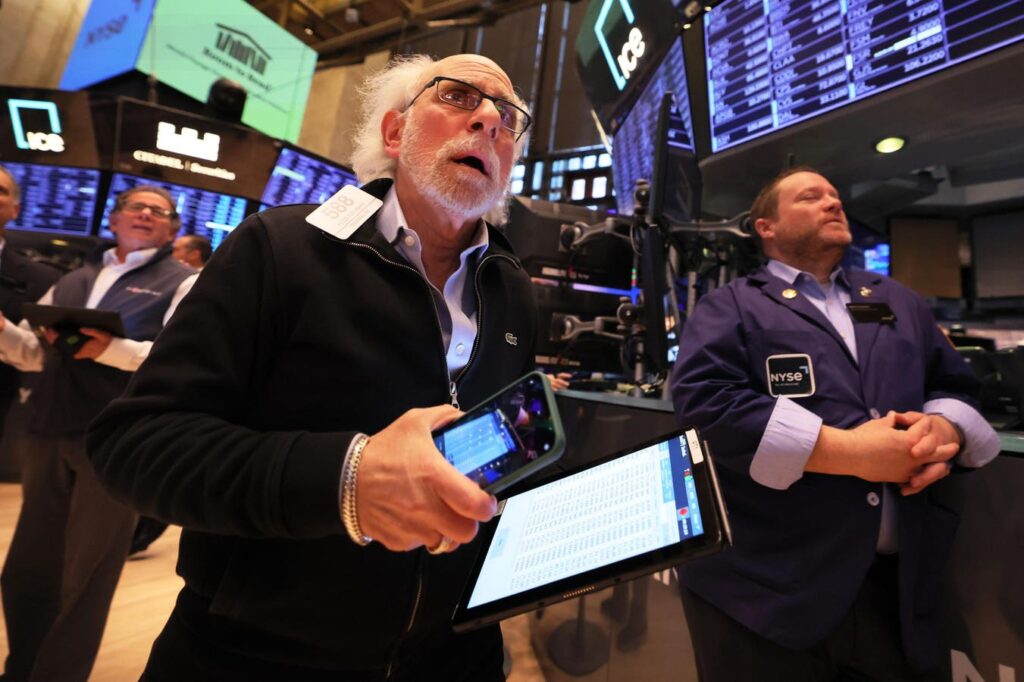U.S. recession risks have risen sharply with the announcement of new tariffs. The chance of a U.S. recession is estimated at 56% by Polymarket and 60% by Kalshi, both relatively liquid prediction markets. Stock markets have also fallen with the S&P 500 currently 9% lower since the announcement of tariffs. That’s in addition to a weak start to 2025.
Fed Sees Slower Growth
Federal Reserve Chair Jerome Powell said, “While uncertainty remains elevated, it is now becoming clear that the tariff increases will be significantly larger than expected. The same is likely to be true of the economic effects, which will include higher inflation and slower growth,” during a speech on April 4.
However, Powell held back from drawing any immediate conclusions for monetary policy, saying. “We will continue to carefully monitor the incoming data, the evolving outlook, and the balance of risks. We are well positioned to wait for greater clarity before considering any adjustments to our policy stance. It is too soon to say what will be the appropriate path for monetary policy.” That said, the expectation of markets is there is a 1 in 3 chance rates decline at the Fed’s next scheduled meeting on May 7. Rates are more likely to move lower at the following meeting on June 18. For that meeting fixed income markets imply there is almost no chance that short-term rates remain at current levels of 4.25% to 4.5% and the question is whether there are one or two cuts by that meeting.
Current Data Remains Robust
Despite recession fears, economic data remains robust on recent reports. The jobs report for the month of March showed some strength with 228,000 jobs added. Unemployment ticked up a fraction to 4.2%. Inflation remains close to the Federal Open Market Committee’s target. The Federal Reserve’s preferred Personal Consumption and Expenditure inflation metric showed a 2.5% annual increase to February 2025. That’s close to, but still above, the Fed’s 2% annual target.
However, there are concerns that the full impact of tariffs and potential retaliatory measures have not been picked up in the economic data yet and releases in May and beyond will offer a fuller assessment of the impact of recent economic policies. That’s because most economic reports have a lag of several weeks after the economic events they report on.
GDP Nowcasts
Nowcasts of economic growth for the first quarter of 2025 show mixed assessments. The Atlanta Fed’s model projects growth of around zero, but, in contrast, the New York Fed’s model anticipates growth of over 2%. The official advanced estimate of reported growth for the quarter is scheduled to be released on April 30.
What To Expect
The probability of recession has risen sharply, but it’s a little over 50/50 currently. That means a 2025 recession remains a risk rather than a certainty. Economic uncertainty is extremely high with much depending on incoming data.
For now, the Fed appears on a similar path as prior to the introduction of tariffs with moderate interest rate cuts expected in 2025. However, that trajectory could change as economic data comes in. Fixed income markets implicitly project that the Fed will more likely cut a little more aggressively than the Fed’s own current plans. That suggests that the Fed could react more to potential risks to economic growth from tariffs and other factors rather than any potential inflationary pressures, though, for now, the Fed is awaiting the data. In contrast, financial markets appear to have already reached a more negative conclusion on the impact to profitability.
Read the full article here

